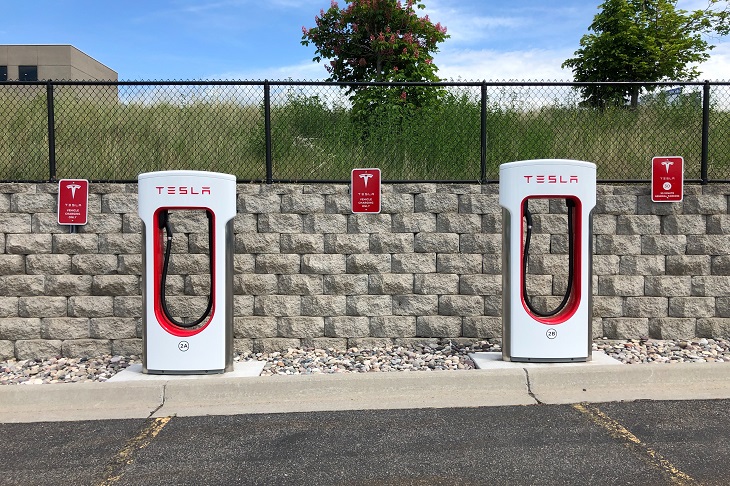A recent article in The Australian gave a fascinating insight into the world of EVs, told from the point of view of a sceptic.
I am referring to an article written by Gemma Tognini, a self-confessed devotee and owner of V8 utes and the like, vehicles more often associated with people that have more testosterone coursing through their body than Gemma. For this reason, she rather uncharitably referred to herself as a hypocrite and made no secret of the fact that she bought the EV for one reason, and one reason alone – the generous tax breaks.
It’s okay Gemma – that doesn’t make you a hypocrite, but a pragmatist. To anyone that will listen, I’ll make no secret of my disdain for Japanese motorcycles, and yet at the time of writing I have two of them in my garage. Why, you may ask? Well, they were very cheap. There’s nothing wrong with acquiring an item to which you have no philosophical connection on the basis of cost alone…
The fascinating thing about Gemma’s article is that it’s the first time I’ve read about the EV experience from a person who wasn’t doing it to save the planet. For the first time we had a hard-nosed, analytical study of the day-to-day logistics of owning one of these cars.
And when I say logistics, I mean charging.
That’s not something those of us that use vehicles powered by petroleum derivatives need to consider, and we find it a major catastrophe if we have to wait five minutes at a busy servo to fill up. But as Gemma discovered (and explained), travelling more than a few kilometres from home in an EV carries with it issues concerning the availability of charging stations, whether they are working or not, and whether they are occupied. Then, of course, there is the time required to recharge.
Devotees of EVs will say, ‘Ah yes – but we are in the very early days yet. People had the same problem when motor cars replaced horses. Petroleum wasn’t readily available, and filling up your car involved cumbersome and time-consuming hand pumps. But look at it now! Why, I’ll bet you that in no time at all, we’ll be able to pull up in our EV, charge it fully in a few minutes, and then drive to Darwin and back twice. After all, look at computers! Our humble Apple phone dwarfs the computing power of the Apollo 11 computer! Give it a few years and all these charging issues will be a thing of the past!’
Unfortunately, here’s where another Italian comes into play – Enrico Fermi, one of the fathers of Quantum Physics. It was he who identified what has come to be known as the Fermi Gap. You see, embedded deep in the electronic structure of any conductor or semiconductor, is a fundamental inefficiency that no amount of technology can overcome.
This should come as no surprise to us. The lead–acid battery has been starting cars since 1859 (or at least from when cars were invented). There have been many advances made in their design since then, but one thing that hasn’t changed is their charging time. Even today a $400 Glass-Gel battery will charge no faster than a $100 cheapie. In the normal course of events, the battery is charged by our car’s alternator, after delivering several hundred amps in a couple of seconds to start the car. But if we leave our lights on, and the battery becomes depleted, there is no quick way to get charge back into the battery, and it generally requires an overnight charge. The only differences between the cheap batteries and the premium ones are the amount of current they deliver, the amount of maintenance they require, and their life. But there is no difference in charging rates.
Here’s why.
In just the same way that a car can run out of fuel, we can think of a flat battery as running out of electrons. Charging the battery is essentially putting back the electrons that were lost when the battery discharged. And so when we connect our battery to the charging circuit, electrons flow from the connecting electrodes into the battery cells. Unfortunately, however, the electrons do not flow quite as easily as the fuel from a bowser.
Although, in principle, an electron will flow from a position of higher energy to lower energy, a substantial energy (voltage) gap must be created for the process to start, and this differential is known as the Fermi Gap. It’s an inefficiency that can only be managed, but never eliminated.
So how does it work? Imagine you have an early model 80 Series Landcruiser (notorious for their poor handbrakes) sitting on a ramp, in neutral, with the handbrake on. Suppose we now raise the ramp. At first nothing happens, but when the ramp is steep enough the gravitational pull will overcome the handbrake’s resistance, and it will start to roll down the ramp.
Suppose we now wish to increase the rate at which it rolls down the ramp. Well, all we do is increase the slope of the ramp. Now it rolls faster. But when it gets to the bottom and we examine it, we find that the brakes are hotter than when it rolled slowly.
So it is with batteries. We can increase the charging voltage (the slope of the ramp) to push electrons through faster, but the result of this is increased heat in the battery (caused by internal resistance). And as anyone that knows anything about batteries knows, nothing kills a battery (any battery) faster than heat. This is the reason many European cars place the battery under one of the seats or in the boot – a hot engine bay is not an ideal spot for a battery.
But there’s another problem. As the battery charges, the efficiency decreases – more heat is generated at lower currents as the battery fills with charge. For this reason, smart chargers will begin charging at a higher current, then trail off as the battery approaches maximum charge.
So where does all this leave us with EVs? Firstly, degradation of the batteries is inevitable, even if they aren’t overheated. Eventually, the crystal structures morph into more stable structures that are less reactive (in chemical terms, that’s what ‘stable’ means), and so that portion of the battery’s recharging capacity is lost.
Secondly, we are stuck with slow charging and have to manage it. There are essentially two options here. The first one is to simply put bigger batteries into the cars. Suppose I were to charge a battery from 20 per cent to 80 per cent. I now double the size of the battery and charge it from 20 per cent to 50 per cent. The amount of charge in each case is identical, but the charging of the larger battery would be more efficient, and could therefore be carried out more quickly than in the first case with the smaller battery. This approach, however, has two obvious disadvantages – the cars become both more expensive and heavier.
A lot of people seem unaware of this latter issue. The entry-level Tesla 3 weighs in at 1,800kg, a substantial increase over an equivalent-sized Hyundai at 1,300kg. As the battery comprises generally about 25 per cent of the weight of an EV, doubling the battery would increase the weight to 2,250kg, as much as a Landcruiser… This option, therefore, quickly loses its viability.
The second approach to the battery recharging issue is having removeable batteries, like in a torch. Believe it or not, such a car exists – the ‘Silence SO4’ – a tiny car resembling a Smart Car. How this approach could be implemented in larger cars such as Teslas remains to be seen.
There are other logistical issues with EVs, such as the availability of lithium and the problem (and it’s a big one) of waste batteries. These are beyond the scope of this article.
But one thing is clear – the problems that Gemma faced on her jaunt beyond the city limits aren’t going away. No doubt more charging stations will pop up here and there, but the problem of slow charging is embedded in the electronic structure of the batteries, and there simply is no way around it.
At this point I normally finish an article with some pithy comment, but on this occasion, I can’t think of one. I simply make this unavoidable observation – the widespread use of EVs is simply not viable. When that become clear to our leaders, and what the fallout from that is, is anybody’s guess.
Got something to add? Join the discussion and comment below.
Get 10 issues for just $10
Subscribe to The Spectator Australia today for the next 10 magazine issues, plus full online access, for just $10.


























Comments
Don't miss out
Join the conversation with other Spectator Australia readers. Subscribe to leave a comment.
SUBSCRIBEAlready a subscriber? Log in